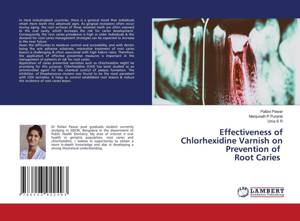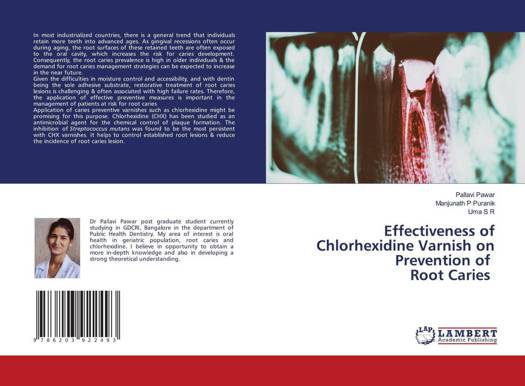
- Afhalen na 1 uur in een winkel met voorraad
- Gratis thuislevering in België vanaf € 30
- Ruim aanbod met 7 miljoen producten
- Afhalen na 1 uur in een winkel met voorraad
- Gratis thuislevering in België vanaf € 30
- Ruim aanbod met 7 miljoen producten
Effectiveness of Chlorhexidine Varnish on Prevention of Root Caries
Pallavi Pawar, Manjunath P Puranik, Uma S. R.
Paperback | Engels
€ 39,45
+ 78 punten
Omschrijving
In most industrialized countries, there is a general trend that individuals retain more teeth into advanced ages. As gingival recessions often occur during aging, the root surfaces of these retained teeth are often exposed to the oral cavity, which increases the risk for caries development. Consequently, the root caries prevalence is high in older individuals & the demand for root caries management strategies can be expected to increase in the near future. Given the difficulties in moisture control and accessibility, and with dentin being the sole adhesive substrate, restorative treatment of root caries lesions is challenging & often associated with high failure rates. Therefore, the application of effective preventive measures is important in the management of patients at risk for root cariesApplication of caries preventive varnishes such as chlorhexidine might be promising for this purpose. Chlorhexidine (CHX) has been studied as an antimicrobial agent for the chemical control of plaque formation. The inhibition of Streptococcus mutans was found to be the most persistent with CHX varnishes. It helps to control established root lesions & reduce the incidence of root caries lesion.
Specificaties
Betrokkenen
- Auteur(s):
- Uitgeverij:
Inhoud
- Aantal bladzijden:
- 52
- Taal:
- Engels
Eigenschappen
- Productcode (EAN):
- 9786203922493
- Uitvoering:
- Paperback
- Afmetingen:
- 150 mm x 220 mm

Alleen bij Standaard Boekhandel
+ 78 punten op je klantenkaart van Standaard Boekhandel
Beoordelingen
We publiceren alleen reviews die voldoen aan de voorwaarden voor reviews. Bekijk onze voorwaarden voor reviews.










